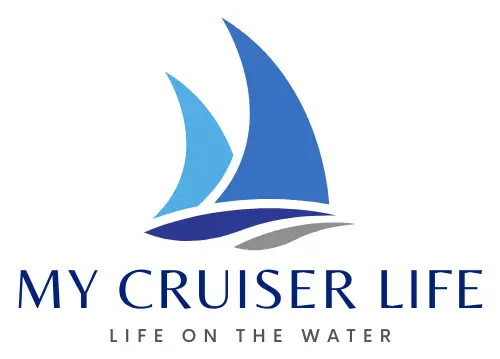Buying a sailboat represents one of the most exciting yet financially risky decisions you’ll ever make. Whether you’re dreaming of weekend coastal cruising or blue-water adventures, the wrong choice can turn your sailing dreams into a costly nightmare of endless repairs and safety concerns. Most first-time buyers focus solely on aesthetics and price, overlooking critical structural issues, outdated systems, and hidden maintenance costs that can drain your budget for years. Understanding what to look for when buying a sailboat reveals the insider knowledge that marine surveyors and experienced sailors use to identify quality boats, negotiate fair prices, and avoid expensive mistakes.

Table of Contents
- Define Your Sailing Needs
- Budget & Hidden Costs
- New vs. Used Sailboats
- Hull & Rigging Inspection
- Interior & Living Comfort
- Engine & Electrical Systems
- Survey & Sea Trial
- Closing the Deal
- FAQs – What to Look for When Buying a Sailboat
Define Your Sailing Needs
Think of choosing a sailboat like picking the right vehicle for your lifestyle. You wouldn’t buy a massive pickup truck if you’re just commuting downtown, right? The same logic applies here. Your sailing plans determine everything about the boat you should buy:
- Weekend sailing and day trips – If you’re planning lazy Saturday afternoons exploring nearby coves with a cooler full of sandwiches, you’ll want comfort, easy handling, and modern conveniences that make your time on the water relaxing rather than work. A coastal cruiser designed for this lifestyle usually features lighter construction, larger windows for natural light, and spacious cockpits perfect for entertaining friends.
- Extended cruising and ocean crossings – If you’re plotting courses to distant islands or planning to live aboard for months at a time, you’re entering bluewater cruiser territory. These boats prioritize structural integrity over luxury amenities. They’re built like tanks – heavier, stronger, and designed to handle whatever Mother Nature throws at them when you’re 500 miles from the nearest harbor.
- Racing and performance sailing – Maybe speed gets your blood pumping more than sunset cocktails. Racing yachts represent a completely different breed, where every pound matters and aerodynamics trump creature comforts.
Let’s get brutally honest about your intended use and personal sailing goals. That 50-foot cruiser looks amazing in the marina, but if you can only get out three weekends a year, you’re paying yacht club fees for a very expensive decoration. The smartest approach? Start with your realistic sailing lifestyle match and work backward.
Budget & Hidden Costs
Whatever you budget for buying your sailboat, plan to spend at least that much again in the first few years. Experienced cruisers often follow the 50/50 rule – use half your total budget for the purchase, then save the other half for the inevitable upgrades and repairs that’ll make the boat truly yours.
Total cost of ownership extends far beyond that initial handshake and check. A $50,000 sailboat might seem like a bargain until you factor in the annual costs that can easily hit $7,000 or more:
- Marina fees – Basic slip in rural area: $2,500 yearly; prime coastal city location: $6,500+ for same size boat
- Sailboat insurance – Typically 1.5% of the boat’s value annually (a $60,000 cruiser costs roughly $900/year to insure)
- Registration fees – Varies by state, usually $3-10 per foot
- Taxes – Sales tax (around 5%) plus annual property tax in some states
- Winter storage – Necessary in colder climates, costs vary by region and storage type
- Refit costs – That “small” electrical panel project can spiral into a $15,000 nightmare when the entire wiring harness needs updating
- New sails – Expect $8,000+ for a full sail inventory replacement
- Electronics upgrades – Modern navigation and safety equipment: $5,000-15,000
- Engine maintenance – Major services and repairs: $3,000-8,000
The boats that look like incredible deals often aren’t. That gorgeous 1980s classic with the rock-bottom price probably needs new sails, updated electronics, and engine work before it’s truly ready for your adventures. Boat depreciation works differently than cars – quality used boats often hold their value well if maintained properly.
Related: The Best Time to Buy a Boat – Time The Tide Right!
New vs. Used Sailboats
Stepping aboard a new sailboat feels like walking into a luxury hotel suite. Everything gleams, smells fresh, and works perfectly. But here’s where most smart money goes: the used vessel market offers incredible value if you know what you’re looking for.
New sailboat advantages:
- Latest safety features and modern electronics
- The manufacturer’s warranty provides peace of mind for major components
- Customizable layout, colors, and equipment to match your preferences
- Predictable costs with no surprise repairs or mystery modifications
- Everything works perfectly from day one
- Latest technology and design improvements
Used sailboat benefits:
- 40% less cost than new, while offering 90% of the functionality (well-maintained 10-year-old boats)
- Come loaded with expensive upgrades previous owner already absorbed (electronics, quality sails, comfort improvements)
- Better value proposition for your dollar
- Avoid the steepest depreciation hit (new boats lose value fastest in the first few years)
- Pre-owned boats 3-5 years old offer modern features without the new boat premium
- More boat for your budget
Working with an experienced brokerage can help navigate the used market complexity. Good brokers know the history of boats in their area and can steer you toward well-maintained vessels while warning you away from potential money pits. Pre-owned boats require more due diligence but offer better bang for your buck. The key is distinguishing between normal wear and concerning damage. Most mechanical issues show up within the first few years anyway, so a 3-5 year old boat lets the original owner absorb that initial depreciation while you still get relatively modern systems.
Hull & Rigging Inspection
Your sailboat’s hull integrity reveals its water history. Check for deep gouges, cracks, or mismatched patches in the gelcoat. Below the waterline, osmosis creates small blisters that smell like vinegar when opened, indicating moisture penetration. Minor osmosis is manageable, but extensive blistering costs tens of thousands to repair.
Feel along the hull for soft spots or excessive flex. Fiberglass cracks around through-hull fittings and chainplates are critical stress points requiring close examination.
The mast and rigging systems demand serious attention. White powdery residue where stainless steel meets aluminum signals dangerous galvanic corrosion. Rigging corrosion often hides inside wire rope, invisible to casual inspection.
Check rigging age – insurance companies typically require replacement every 10-15 years. Twenty-year-old rigging represents a major upcoming expense. While initial boat surveys help identify obvious problems, professional marine surveyors provide trained expertise. Thorough rigging condition assessments include pulling pins, checking wear patterns, and sometimes X-raying wire rope for internal corrosion.
Interior & Living Comfort
The galley might look gorgeous in the brochure, but can you cook while heeled over 20 degrees? Those beautiful glass-front cabinets become projectile launchers without proper rails and restraints. Smart cabin layout prioritizes function over form with deep sinks, secure storage with positive latches, and handholds everywhere.
That gorgeous island berth in the bow is unusable in any seaway. The motion up there will have you bouncing off hull sides all night. Serious cruisers prioritize midships berths where motion is most comfortable.
Headroom matters more than you think, especially if you’re tall or plan extended time aboard. Constantly ducking gets old fast and leads to painful encounters with low-hanging hardware.
The head deserves careful attention. Marine toilets are complex, and a malfunctioning head ruins any cruise quickly. Storage volume trumps convenience—you need space for clothes, food, tools, and gear that accumulates on any boat.

Engine & Electrical Systems
Pop the engine cover and take a deep breath. A well-maintained diesel engine smells like… well, diesel. But if you detect sweet coolant odors, burning smells, or oil where it shouldn’t be, start asking hard questions about maintenance history.
Check the engine hours versus the boat’s age. Marine diesels should handle 1,500-3,000 hours with proper maintenance, but a 10-year-old boat with only 50 hours might indicate neglect rather than light use. Engines need regular exercise to stay healthy.
Look for signs of recent maintenance – clean oil, fresh filters, and organized engine compartments usually indicate an owner who cares about their machinery. Engine hours matter, but maintenance history matters more. A diesel with 2,000 hours and complete records beats one with 500 hours and mystery maintenance every time.
The marine electrical system powers everything from navigation lights to refrigeration. Start with the main electrical panel – are breakers labeled clearly? Do you see signs of corrosion, burned connections, or amateur wiring modifications? Battery condition tells you a lot about electrical system care.
Marine batteries should be secured properly, terminals clean and tight, and electrolyte levels appropriate. A boat with dying batteries often indicates charging system problems that can cascade into expensive repairs.
Related: Catamaran vs Pontoon — Facts Buyers Should Know
Survey & Sea Trial
Hiring a qualified surveyor isn’t optional – it’s insurance against expensive mistakes. These professionals spot issues that regular people miss. A thorough marine survey covers the boat’s structure, engine, electrical safety, and legal requirements. The surveyor report becomes your bargaining tool and future repair guide.
Schedule the survey after you’ve looked at the boat yourself, but before you buy it. This timing gives you room to negotiate while protecting you if serious problems show up.
A proper sea trial shows how the boat works, not just how it looks at the dock. Test all systems under real conditions – engine power, sail handling, steering response, and electronics. Pay attention to how the boat moves and balances. Does she sail straight, or do you constantly fight the steering?
Test the engine through all speeds, watching temperatures and vibrations. An engine that runs poorly during the test won’t get better after you buy it. Take photos and notes of everything. No used boat is perfect – the goal is knowing exactly what you’re buying.
Closing the Deal
Boat title transfer requirements vary by state, so verify that the seller owns the boat with a clear title. Research your state’s specific registration requirements, as some don’t title boats at all. Document everything: title, liens, registration records, and sales tax proof. Missing paperwork delays registration and costs penalties.
Use qualified escrow agents to handle money, coordinate inspections, and ensure conditions are met. Survey findings strengthen your negotiation position—present facts professionally. Sellers often prefer price reductions over repairs, giving you quality control.
Coordinate insurance coverage effective immediately, arrange transportation, and confirm marina arrangements. Walk through the boat one final time before closing, testing systems, and verifying included items.
FAQs – What to Look for When Buying a Sailboat
What is the 10% rule for yachts?
The 10% rule suggests budgeting approximately 10% of your boat’s purchase price annually for maintenance, repairs, and upkeep. For a $100,000 sailboat, expect around $10,000 yearly in costs, including haul-outs, bottom paint, sail maintenance, engine service, and equipment replacement. This rule helps buyers understand the true cost of ownership beyond the initial purchase price, though actual expenses can vary significantly based on boat age, condition, and usage patterns.
What to look for when inspecting a sailboat?
Focus on structural integrity first: check the hull for blisters, cracks, or soft spots, especially around through-hulls and keel attachment points. Inspect the rigging for corrosion, frayed cables, and worn fittings. Test all electrical and plumbing systems, engine operation, and sail condition. Look for water damage, mold, or unusual odors in the cabin. Pay attention to maintenance records and overall cleanliness, which often reflect the owner’s care level.
